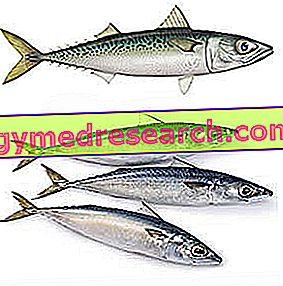What is Pollen Allergy?
Pollen allergy is a hypersensitivity reaction of the immune system, which occurs with seasonal periodicity and is triggered by the inhalation of pollen grains produced by plants. Allergic manifestations are necessary, in fact, exclusively in those periods of the year in which the flowering of certain plants occurs; for this reason, pollen allergies are also called pollinosis .

In Italy, the pollens that cause allergies are more frequently those produced by four families of plants: Gramineae, Urticaceae, Composite and Birch plants. However, there are people who are also allergic to pollen grains of other species. The most risky months are the hottest months: between March and September, with a peak in April and May. However, it is necessary to consider the flowering period (or pollination) of each plant (see flowering calendar).
Individuals sensitized to pollen often exhibit hyper-sensitivity also towards some perennial allergens, such as the Dermatofagoide (common mite) and the hair of dogs and cats.
It is estimated that every year 10 million Italians have to deal with this disorder in the spring.
Note . The epidemiology of pollen allergy and the role of air pollution.
In recent decades there has been a significant increase in the incidence of the disease, which is concentrated precisely in the most developed and industrialized areas of the world: in Europe it affects about 15% of the population and probably almost 20% in the United States.
Numerous studies, carried out in order to identify the possible causes of the increase in allergies, have identified a connection between the appearance of the disease and the role of atmospheric pollution, for two main reasons:
- The pollen grains absorb and convey the airborne pollutants up to the respiratory tract, increasing their concentration;
- On the other hand, the pollutants carry the allergens present on the pollens, favoring the production of antibodies of the IgE class, typical of the allergic reaction.
What are pollens
Pollens are nothing but male reproductive cells (called dermatophytes ) produced by plants during flowering. These are tiny very light and microscopic grains, of different shapes depending on the plant species, which have the task of fertilizing other vegetables of the same species.
The pollen allergens, of protein or glycoprotein nature, are released on contact with the granule with the moist surface and rich in enzymes of the respiratory mucosa. The same pollens have enzymatic activities that facilitate the penetration of allergens through the mucous membranes.
How allergy develops
The pollen contains special substances, called antigens, capable of "sensitizing" genetically predisposed subjects. In the allergic patient, these substances are released at the level of the respiratory mucosa and are able to cause an overreaction of the immune system, stimulated to produce particular antibodies, the class E immunoglobulins (IgE).
As a consequence of the IgE intervention, chemical mediators of inflammation are released: histamine, prostaglandins, leukotrienes, bradykinin and others. These substances act by causing an inflammatory process: they dilate the capillary vessels and attract particular defense cells from the blood and tissues, which participate in the reaction. The end result is the induction of the typical symptoms of pollen allergy.
Note . Not all plants release pollen capable of inducing an allergic reaction and, in general, a person is allergic only to some allergens. Furthermore, pollen allergy occurs when the concentration of pollen in the atmosphere reaches a certain threshold.
How pollens spread
To reproduce, plants produce pollen: inside these cells the male gametes are formed, responsible for the fertilization of the female seed.
The pollens are divided into:
- Anemophiles (carried by the wind): most pollen with allergological importance comes from anemophilous plants. These plants entrust the spread of their pollen grains to the wind, produced in large quantities so that they reach and fertilize the female gametes of the same species even at considerable distances.
- Entomophilous (transported by insects): pollen is released from entomophilous plants in small quantities and is transported, unknowingly, by insects to another flower of the same species. These pollen grains have little allergological importance, as they are not concentrated in the atmosphere (they are heavier). However, they may be responsible for allergies in particular circumstances, such as in subjects frequently exposed to such plants (such as gardeners and florists).
There are three main categories of pollen implicated in allergy:
| allergen | Main allergenic families | Some examples |
| Betulaceae | Birch, Alder |
| Corylaceae | Carpino Bianco, Carpino nero, Nocciolo | |
| Cupressaceae | Cypress | |
| Fagaceae | Chestnut, Beech, Oak | |
| Oleaceae | Ash, Olive | |
| Plantanacee | plane tree | |
| Spontaneous Graminaceae | Grass Mazzolina, Tail, Paleo Odoroso, Logliarello, Grass of the meadows |
| Growing Graminaceae (Cereals) | Oats, Wheat, Corn, Barley, Rye | |
| Asteraceae Compositae | Artemisia, Ambrosia |
| Urticaceae | pellitory |
Pollination (release of pollen) is related to the flowering period, variable for each species, while the quality and quantity of the various types of allergenic granules present in the air depend on the following factors:
- Presence and diffusion of different types of plants in a given territory;
- Anemophilous and / or entomophilous pollination: most of the pollen grains, able to determine allergic clinical pictures, belongs to anemophilous plants;
- The shape and size of the pollen, which influence its ability to be airy: the pollen grain must be produced in large quantities from plants spread over the territory and be small and light to be transported by the wind at a great distance;
- Presence of components able to act as allergens and to stimulate the immune system of allergic subjects to produce specific IgE antibodies;
- Climatic and meteorological conditions (temperature, wind, atmospheric turbulence, rain, humidity, radiation): the environmental parameters influence the air dispersion and atmospheric concentration of the pollen, once the pollination has begun.
- Dry and warm air facilitates pollination;
- Windy weather facilitates pollen dispersion;
- Excessive humidity tends to postpone pollination and rain causes pollen to fall to the ground; precipitations prolonged in time, prior to the pollination season, favor the growth of plants and therefore a greater production of antigens; if the rain is followed by abundant sun exposure, with rapid evaporation of the water, the plant will produce poorly vital pollen.



